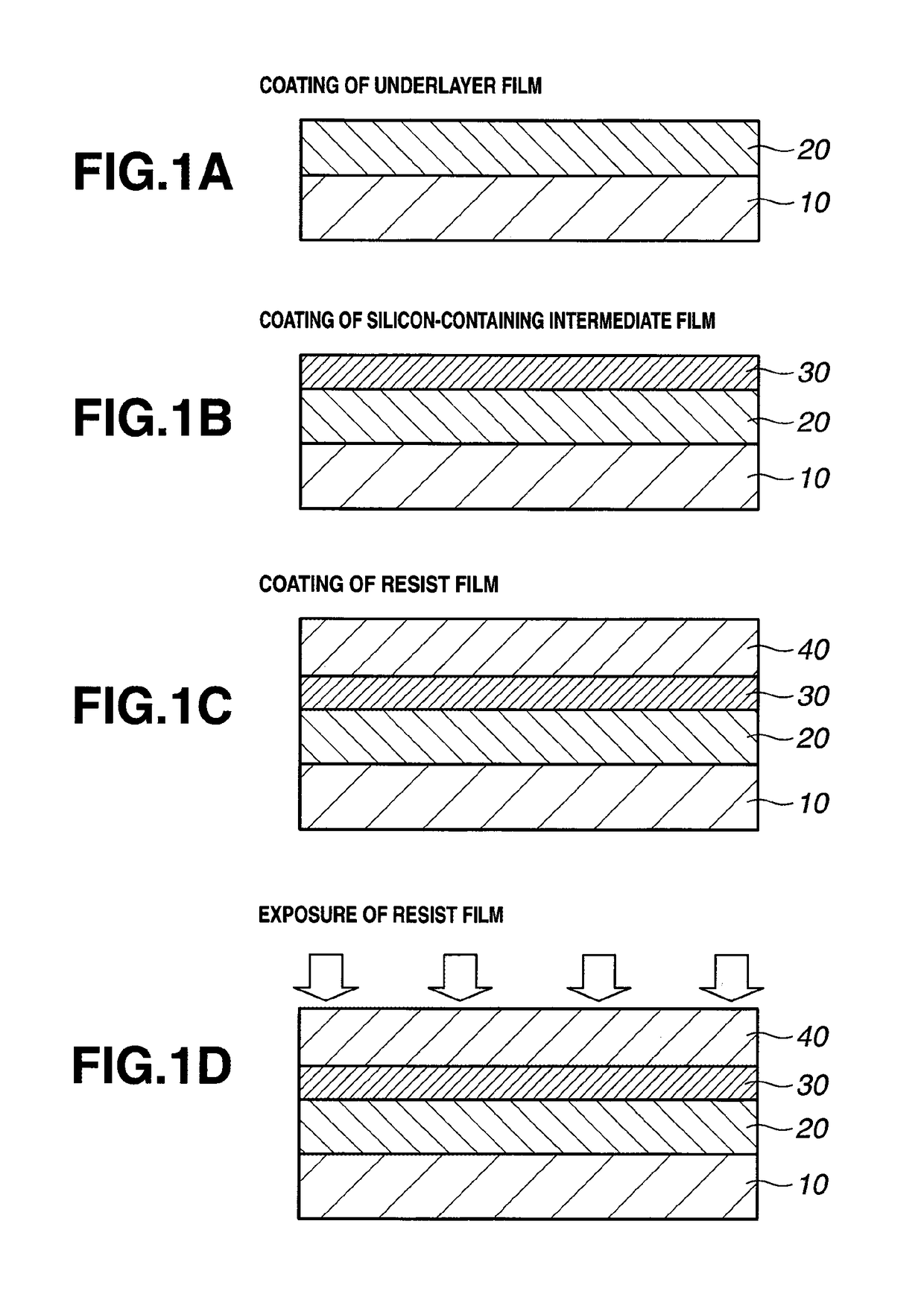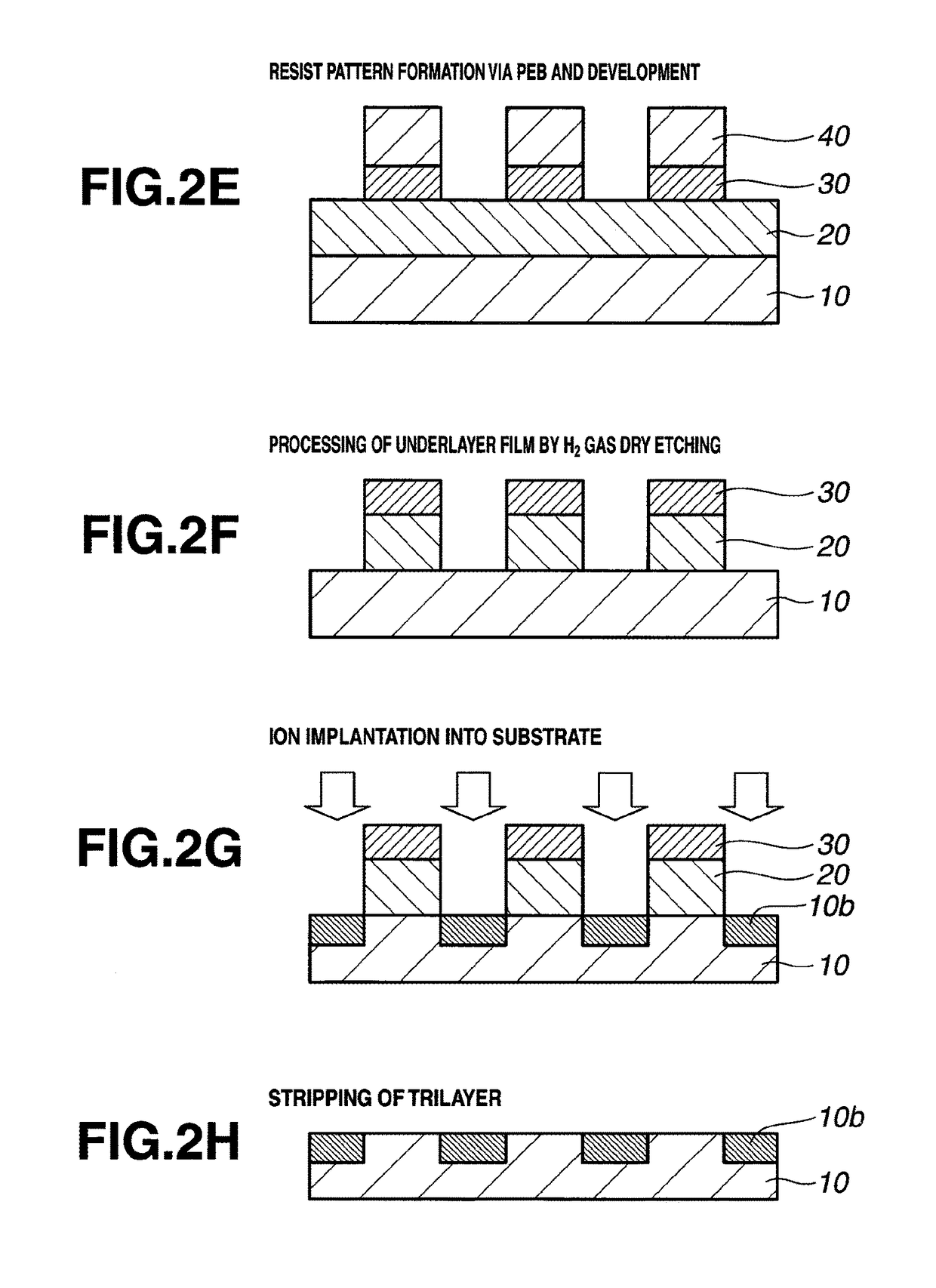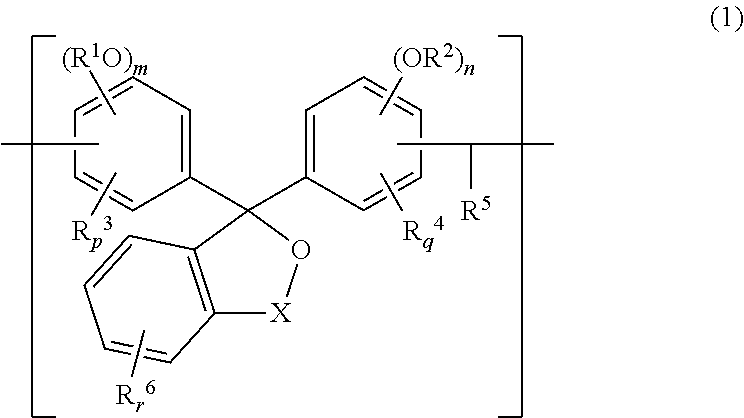Underlayer film-forming composition and pattern forming process
a technology of composition and film, applied in the field of underlayer filmforming composition and a process, can solve the problems of reducing the effect of suppressing substrate reflection, affecting the effect of reducing substrate reflection, so as to achieve the effect of minimizing substrate reflection
- Summary
- Abstract
- Description
- Claims
- Application Information
AI Technical Summary
Benefits of technology
Problems solved by technology
Method used
Image
Examples
example
[0142]Examples of the invention are given below by way of illustration and not by way of limitation.
synthesis example
Synthesis of Novolak Resin
[0143]A substituted or unsubstituted phenolphthalein, Phenol Red, Cresolphthalein, Cresol Red, or Thymolphthalein was combined with a co-condensable compound, 37 wt % formalin, and oxalic acid, which was stirred at 100° C. for 24 hours. At the end of reaction, the reaction product was poured into 500 ml of methyl isobutyl ketone, which was thoroughly washed with water to remove the catalyst and metal impurities. The solvent was removed under reduced pressure. The system was further evacuated to 2 mmHg at 150° C., for removing water and unreacted monomers. In this way, Novolak Resins 1 to 18 and Comparative Novolak Resins 1 to 3 were similarly prepared except the following changes.
[0144]Novolak Resin 6 was prepared using 6-hydroxy-2-naphthaldehyde instead of 37 wt % formalin. Novolak Resin 7 was prepared using 3-furancarboxyaldehyde instead of 37 wt % formalin. Novolak Resin 8 was prepared using 3-thiophene aldehyde instead of 37 wt % formalin. Novolak Resin...
PUM
| Property | Measurement | Unit |
|---|---|---|
| pH | aaaaa | aaaaa |
| size | aaaaa | aaaaa |
| size | aaaaa | aaaaa |
Abstract
Description
Claims
Application Information
 Login to View More
Login to View More - R&D
- Intellectual Property
- Life Sciences
- Materials
- Tech Scout
- Unparalleled Data Quality
- Higher Quality Content
- 60% Fewer Hallucinations
Browse by: Latest US Patents, China's latest patents, Technical Efficacy Thesaurus, Application Domain, Technology Topic, Popular Technical Reports.
© 2025 PatSnap. All rights reserved.Legal|Privacy policy|Modern Slavery Act Transparency Statement|Sitemap|About US| Contact US: help@patsnap.com



